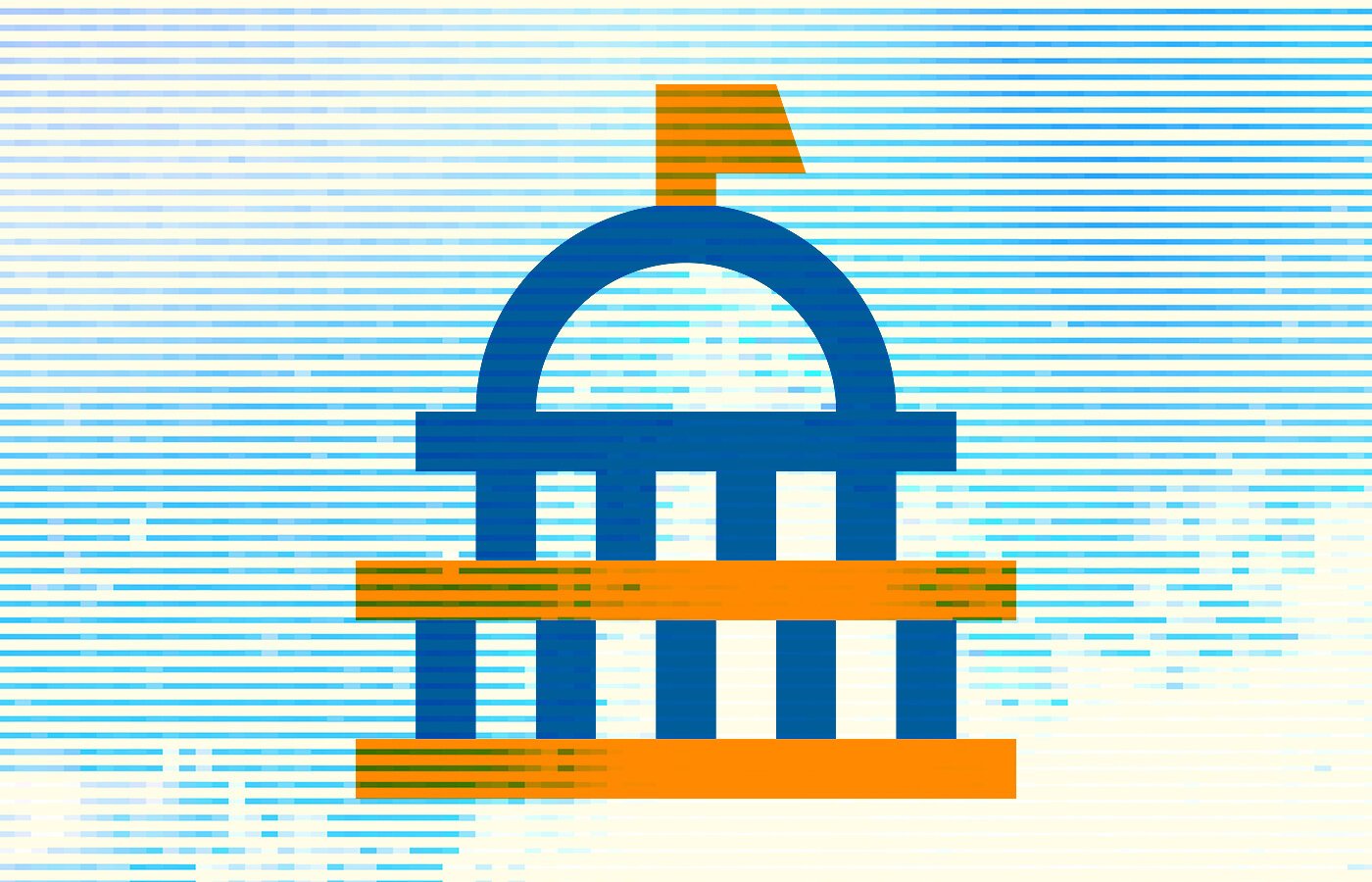blog
Top Trends in Government in 2023
By Mohan S Software development Digital transformation January 10, 2023

More and more services worldwide are going digital because of the rapid development of computing technology over the past two decades and because of COVID-19 health measures mandated enterprises change their methods to become more virtual.
Businesses are moving their offerings online, and a government-wide digital revolution is underway, bringing new ways of doing business and the specialized efficiencies that come with automation.
In this article, we'll talk more about the trends in government 2023.
Connected Government Systems
A connected government is one in which all of the parts of the executive government are interlinked and complementary to one another.
Here's how cloud solutions can help achieve this:
Governments can use the cloud to avoid spending money on data centers and servers without a clear idea of how often they would be used. Adoption also necessitates only a single migration of technologies to the cloud, reducing government IT operations costs and increasing overall efficiencies.
Governments can leverage the productivity tools made available by cloud platforms to streamline administrative and operational procedures and facilitate the remote interchange of information among a wide variety of interested parties.
Governments can use the cloud's backup and recovery features to protect sensitive information.
Cloud not only increases talent recruiting and retention in a highly competitive business but also enables in-house engineers to be more efficient by moving them from antiquated platforms to a modern development platform with access to industry-leading tools and services.
Optimizing Supply Chains
Even if a supply chain interruption occurs in another country, consumers in Singapore, businesses, and suppliers will feel its effects. Natural disasters, international health pandemics, political turmoil, financial upheaval, digital and terrorist attacks, vendor threats, and fast swings in consumer trends and demand can all cause disruptions in the supply chain.
Due to its ubiquitousness and unpredictability, supply chain disruption is no longer a "if," nor is it really a "when. But, the question is, “Are we prepared to deal with the next global supply chain disruption that may arise?”
Agile and resilient work-flows
The extensive portfolio of AI software offered by IBM can aid businesses in taking a holistic approach to operationalizing sustainability across the business, whether that be by maximizing the useful life of physical assets, improving the efficiency and resilience of supply chains, learning how the weather affects business operations, or analyzing and reporting on environmental, social, and governance (ESG) data and initiatives.
Environmental knowledge, operational data, and AI underpin these solutions, allowing for the transformation of data into knowledge that drives smarter, more sustainable decision-making.
Through the introduction of visibility and transparency into processes that extend to supply chain partners, cloud-based process mining promotes this ecosystem process integration.
End-to-end visibility in workflows
Here's how digital technology can help in more visible workflows:
Visibility and Insight Into Your Business Processes
It is much easier to see how your company functions when you use a digital workflow. It can be used to pinpoint the weak points in your company's operations. These blind spots are more difficult to find in the absence of a digital workflow.
Quick Approvals
Approvals are time-consuming and labor-intensive, which is why most companies today employ digital workflows instead. Take, for example, a contract that necessitates the eyes of more than one person. This happens instantly when using a digital workflow solution. If done by hand, this could take two days.
Efficiency and Scalability
With the support of digital workflows, you may innovate more effective ways to run your business. They help you find the causes of process delays, implement workable solutions, and pave the way for automation. When processes are streamlined and automated, businesses run more smoothly.
Power to Audit Processes
Using digital workflows, process audits can be performed with more ease. There are several systems that can record and keep track of process actions, providing a kind of digital ledger. Logging onto the system and selecting appropriate options is all that's required.
Eliminated Manual Processes
Workflows in the digital realm have largely replaced the time-consuming and ineffective manual methods of the past. Transitioning to a digital option helps you save money, time, and energy.
Easier audits
With the program's data, auditors may conduct more thorough risk assessments, create more efficient procedures, and dig into abnormalities that could go unnoticed if the audit only used a sample.
Even with its many advantages, technology cannot do the job of an auditor's human auditors. Technology can free up auditors to apply their unique blend of evaluation, analysis, and judgment to the audit at hand, rather to waste time on routine tasks that could be automated. Technology aids auditors in the same way a calculator aids students in solving increasingly complex problems by allowing them to skip long division and multiplication computations.
Eliminating sampling limits is a major advantage of integrating technology and data analytics in the audit. With the use of data analytics, professionals may examine large datasets for outliers, patterns, and potential danger zones.
Auditors now leverage analytics to prepare better their audits to learn how data moves through a client's system.
Future Proofing
Here’s the need for futureproofing:
Competencies are not being met. Because of technological advancements, certain jobs have become obsolete while others have become insufficiently occupied. The World Economic Forum estimates that professional competence has a half-life of five years. There were 10.6 million job vacancies in Singapore in November 2021, or an astounding 1.5 open positions for every job seeker.
Falling rates of people actively seeking and accepting employment are a major factor. Of the 38 countries that comprise the OECD, 14 million people have left the workforce.
The rate at which people leave their jobs is at an all-time high. Singapore recorded an unemployment rate of 2% in Q3, 2022. This was the lowest jobless rate since Q3 2016, as the economy fully reopened
With the advent of remote work, talent competition has spread across geographic regions.
Estimates suggest that 24 million Europeans, or roughly 11 percent of the labor force, have held a job on a digital platform at some point. Many self-employed people who fell victim to the recession could not get the help they needed from the government.
The labor market instability actually began before the pandemic, but the epidemic greatly expedited its progression.
Better Prepared and Resilient
The government needs to be resilient.
Millions of low-wage workers, along with the youthful and female workforce, are among those newly vulnerable due to the economic dislocation caused by COVID-19.
An aging population, a rise in homelessness and food insecurity, and the persistence of mental health problems and substance misuse all contribute to a greater need for social services.
More people are now relying on social care agencies to meet their basic requirements due to the decline in job quality over the last few decades.
Unfortunately, many countries' governments simply don't have the resources to expand their social safety nets without reducing spending elsewhere.
Climate Change Responsible
Governments around the world are placing a premium on climate resilience, the capacity to respond to, recover from, and adapt to the negative impacts of climate change, as severe weather due to climate change threatens to disrupt the supply of water, electricity, and other resources.
Agencies are institutionalizing climate resiliency by linking climate action to their operations, future-proofing vital infrastructure, integrating ecological sustainability into their initiatives, partnering with public and private sector partners to unlock cooperation, and improving their analytics abilities in order to prepare for future climate breakdowns.
In conclusion, the trends in government 2023 are very significant. Government is now better prepared and resilient, more climate change responsible, more future proof, connected, and striving to enhance supply chains.
With the government taking this path, countries will definitely benefit.


